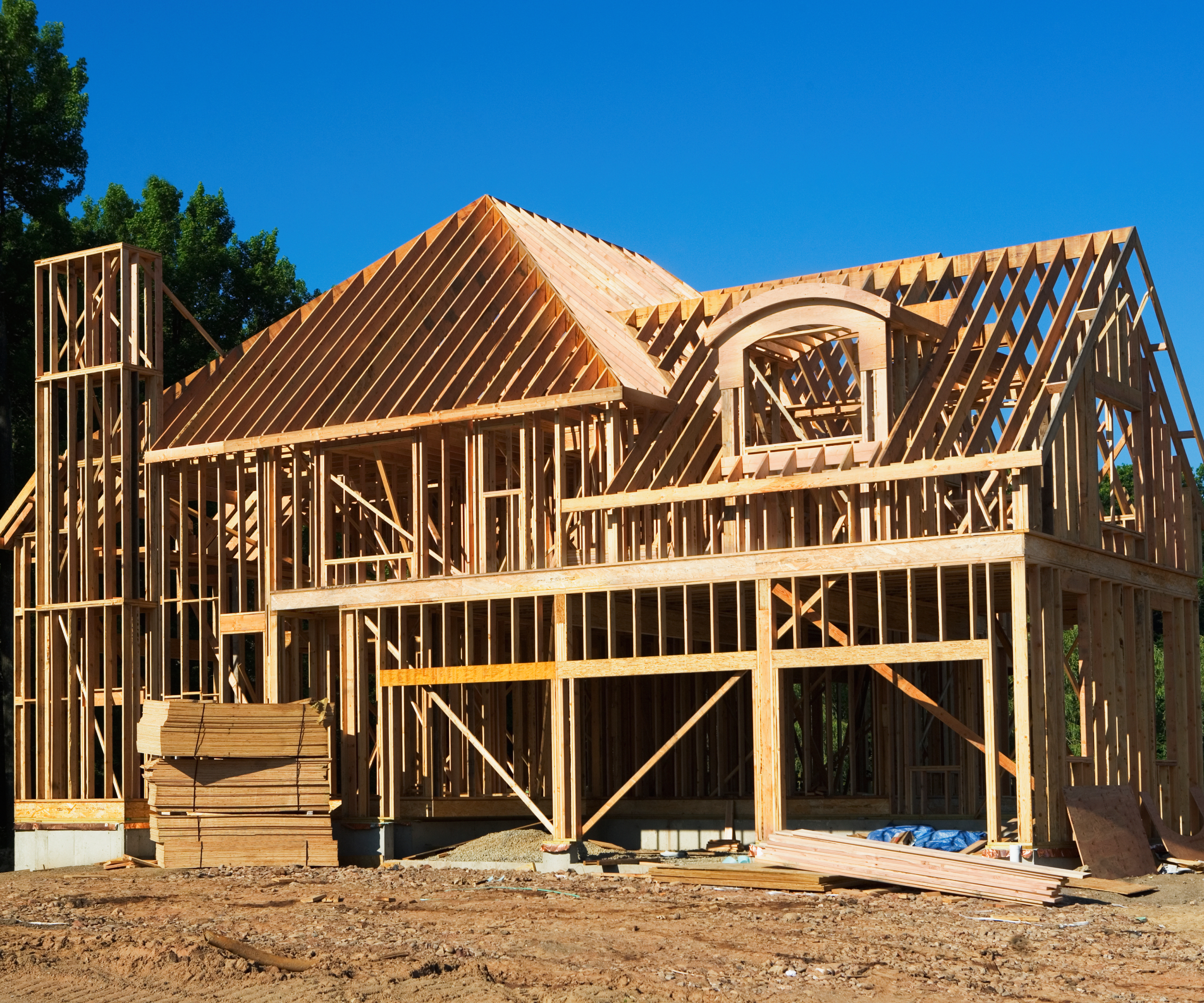What is C16 timber and where can you use it?
Want to know what is C16 timber and where you can use it? Read our expert guide to make sure you use it correctly in your self-build, renovation or extension project

Knowing what is C16 timber is essential if you're embarking on a self-build project. Even if you're project managing rather than physically building the house yourself, understanding what materials have been specified, and why, is key to helping the process run more smoothly.
And of course, when it comes to timbers that are used for building walls or providing support, it's not just about expanding your knowledge - it's about making sure your house is structurally sound.
So if the names and codes used are currently sounding less than familiar, we've asked experts to explain just what is C16 timber and where can it be used.
What is C16 timber and where does it come from?
"C16 timber is a softwood, tested to a grade strength of C16, and is used for construction in the UK," explains Jay Hubbard, from English Brothers who is a member of the Structural Timber Association
"The C stands for coniferous timber, meaning the wood comes from conifer trees, and the 16 indicates the timber has a minimum bending strength of 16 N/mm² (megapascals)."
But what are its uses and likewise it's limitations when it comes to using it in either timber frame construction or other domestic uses?

With a background in the automotive advertising and PR industry, Jay Hubbard has been part of his family’s business, English Brothers, for 20 years. A member of the Structural Timber Association, the company has been manufacturing bespoke timber frames since 1924 – exclusively for the self-builder.
How is C16 timber graded?
Jay Hubbard explains how timber is graded to ensure it qualifies as C16 timber.
Bring your dream home to life with expert advice, how to guides and design inspiration. Sign up for our newsletter and get two free tickets to a Homebuilding & Renovating Show near you.
"Grading can be done either visually or by machine," says Jay. "Visual grading involves inspection by trained personnel, while machine grading uses automated systems to assess the timber's properties."
Deciding what is C16 timber is based on the following tests:
- Strength: Measured through mechanical testing or visual inspection to ensure it meets the required structural properties
- Appearance: Checks for defects like knots, splits, and warping, which can affect the timber's structural integrity
- Density and moisture content: Ensuring it meets the necessary specifications for density and has an appropriate moisture content
What is C16 timber used for?
In answer to the question what is C16 timber used for, "C16 is typically used for internal timber based projects like partition and stud walls, and is also used for wall and floor joists," explains Steve Jenkins. Homebuilding's DIY expert.
"As it's graded by strength and appearance, if you need a stronger wood, typically for larger projects, you need an alternative to C16," adds Steve.
"It's suitable for non-critical load-bearing applications," says Jay Hubbard, "where the load and stress on the timber are within the limits of C16's strength – if beyond, the next logical step is to use C24."
"If you want a more aesthetically pleasing finish with less imperfections/knots - you should also choose C24," says Steve.


Steve was previously the DIY content editor for Homebuilding & Renovating and is a keen DIYer with over 20 years of experience in transforming and renovating homes. He specialises in painting and decorating, but has a wide range of skills gleaned from working in the building trade for around 10 years.
Is C16 suitable for use outdoors?
C16 is not waterproof confirm our experts, "so to make it waterproof you will need to apply a specialist treatment," explains Steve Jenkins. "As with any wood, you will need to treat it if it is going to be exposed to the elements. For example, when using it to build a decking frame."
Jay Hubbard agrees, telling us, "if it needs to be used in environments where it will be exposed to moisture, it should be treated with appropriate preservatives to protect against rot and decay.
"All C16 used within timber frame construction should be treated," he adds. "It’s usually a pale-yellow colour. Any exposed cut-ends, such as soleplates, should be re-treated with a brush or spray-on preservative.
"If properly treated with preservatives to protect it from moisture, insects, and fungal decay it’s fine to use outdoors," says Jay. "However, without treatment, it is prone to deterioration when exposed to the elements, just as any untreated softwood."
When should you not use C16 timber?
"Avoid using C16 where high strength is essential," says Jay Hubbard, "namely in high-load applications such as in large span beams or floors supporting heavy loads."
"It can be used in certain situations such as floor joists in a domestic property," adds Steve Jenkins, as long as the load does not not exceed 1.5 kN/m²."
"It's also best to avoid environments with extreme moisture or outdoor conditions without proper treatment," says Jay.
"As a DIY expert, I would use C16 mainly for building interior partition walls or stud walls and decking frames - as long as it is properly treated beforehand," confirms Steve.
What are the alternatives to C16 timber?
"The obvious answer here is C24 timber," says Steve. "This is stronger, more visually appealing, but also more expensive."
For projects where neither C16 or C24 is suitable, Jay Hubbard also suggests the following:
- Engineered wood: Such as laminated veneer lumber (LVL) or glulam, which offer higher strength and stability
- Hardwood timber: For applications requiring even greater strength and durability
- Pressure-treated timber: For outdoor use where moisture resistance is critical
For more information on the different types of timber and their uses, find out more about softwood in our guide to what is CLS timber, and consider which system may be more suitable if you're building a house in our guide to timber vs masonry.

Sarah is Homebuilding & Renovating’s Assistant Editor and joined the team in 2024. An established homes and interiors writer, Sarah has renovated and extended a number of properties, including a listing building and renovation project that featured on Grand Designs. Although she said she would never buy a listed property again, she has recently purchased a Grade II listed apartment. As it had already been professionally renovated, she has instead set her sights on tackling some changes to improve the building’s energy efficiency, as well as adding some personal touches to the interior.
